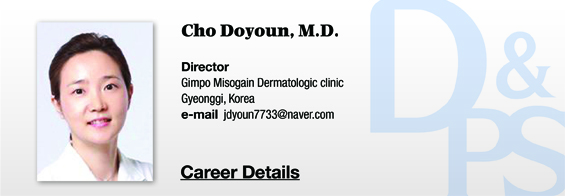
From the ancient times, massages and pressure points have existed to stimulate lymph drainage and increase body temperature to improve one’s figure. Today mesotherapy where various medications are injected in isolated areas of correction is being commonly used for fat reduction. Mesotherapy is carried out 1-2 times weekly and injected drugs with different mechanisms of action gradually bring fat reduction. Endermology combined with mesotherapy can enhance efficacy.
Endermology uses powerful vacuum suction on the skin and subcutaneous tissues to promote fluid circulation and degrade subcutaneous fat. Endermology helps excrete adipocytes damaged through mesotherapy and accelerates fat reduction by inducing physical damage to the weakened adipocyte membrane. It also induces remodeling of the damaged tissues in time and brings cellulite reduction. This can be followed by various energy based treatments including radiofrequency, ultrasound, cryotherapy, acoustic wave, and magnetic field therapy, etc.
Looking at the global trends of body sculpting, Syneron obtained FDA approval for VelaShape (RF) in 2007 for thigh diameter reduction and temporary cellulite reduction. This put them in the lead in the market for body sculpting and body tightening procedures. In 2012, Syneron released UltraShape V3 (Ultrasound) to expand their market to ultrasound as well. Ultrasound was first used in body sculpting and skin tightening by Solta in 2011. Solta obtained FDA approval for Liposonix (HIFU). Heat is generated when sufficient energy is focused in a small area. Under the theory that adipocytes are irreversibly destroyed after 1-second exposure to temperatures of at least 56. HIFU is approved for local fat reduction of the size of the abdomen.
[Advertisement] Ultra Skin/Pastelle – Manufacturer: WONTECH(www.wtlaser.com)
Zeltiq was the first to introduce controlled cooling technology with Coolsculpting which cools local fat tissues to induce penniculitis and eventual apoptosis of crystalized adipocytes. After obtaining FDA approval for fat reduction of the flank in 2010, Coolsculpting is leading the market for cryolipolysis. In 2013 and 2014, Syneron has led the global market of photomedical treatments and Zeltiq is a close second with successful body sculpting and skin tightening devices.
Following the American Society of Plastic Surgery’s new liposuction guidelines released in 2009, liposuction has been the most frequently used modality for local fat removal. On the other hand, non-invasive body sculpting and skin tightening procedures are gaining in popularity as patients are averse to the risks of invasive procedures. The Korean market is following different trends from the rest of the world thanks to innovative devices developed by domestic manufacturers. However, non-invasive fat removal options will experience drastic growth in Korea as well.
.jpg)
<Figure 2> Before and after non-invasive fat reduction of the abdomen.
The body sculpting treatment can integrate a surgical element such as liposuction, however, being a dermatologist, I prefer the non-invasive methods (Table 1). Non-invasive modalities (Figure 2) cause shorter downtime and can be repeated over sufficient intervals. They are also cost efficient with excellent efficacy and does not require post-treatment care. There is no doubt that the non-invasive treatments are a promising new area. In the next articles, we will take a closer look at each of these non-invasive body sculpting and skin tightening treatments.
References
1. Available at: http://www.census.gov/population/projections/data/national/np-d1.html. Accessed April 20, 2015.
2. Available at: http://www.kostat.go.kr. Accessed April 20, 2015.
3. Recognition of obesity and attitude toward weight control in different age groups Korean J. Food & Nutr. Vol. 22. No. 1, 110-112 (2009)
-To be continued




















